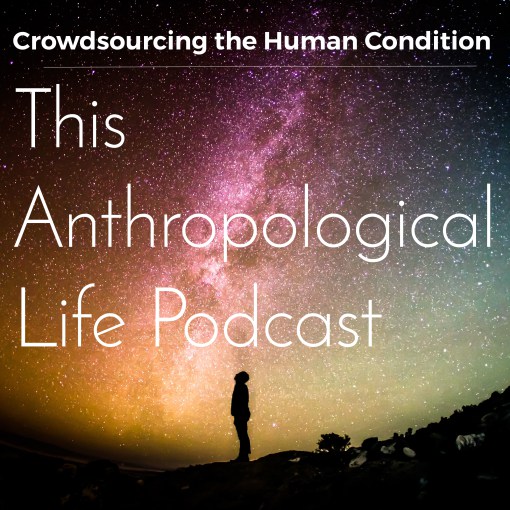I totally enjoy talking about anthropology, applying its methods and tools to business and organizational settings, and teaching people why corporate anthropology can help their business or non-profit “soar.”
So you can understand why it was a pleasure to speak with the TAL team—Adam Gamwell, Ryan Collins and Aneil Tripathy—recently about corporate anthropology on their podcast “This Anthro Life.” (You can listen to all of their podcasts on iTunes and download individual ones here.)
Over 38 minutes, we discussed:
- How can we make change easier?
- Do women lead differently from men?
- What is corporate anthropology?
and a whole lot more. To listen to the podcast, click on the link below.
And here is a 4-minute overview of our conversation that you might enjoy:
The team’s questions, my answers and the discussion that followed were truly amazing; I share some of them here.
TAL: What makes Corporate Anthropology different from other applications of anthropology?
When Roger Dooley interviewed me for “The Brainfluence Podcast,” he asked me the same question. “Don’t anthropologists typically study small scale societies?”, he said. “Why are you applying anthropology to modern complex organizations?”
Rather ironic, isn’t it, that we see our organizations as too big and complicated to be “observed.” And why shouldn’t we apply the observational methods and tools of cultural anthropology to our own societies? Over the past 100 years or more, anthropologists have been stepping out and observing companies of all sizes, studying their customers of today and those who could be their customers in the future, seeing both with fresh eyes that often only anthropologists possess.
Case in point: Sony Ericsson hired anthropologists to study how teens, particularly girls, used cell phones in order to better understand how to design them—although they missed the great transformation which the iPhone brought about. Similarly, Intel now has anthropologists on staff who research how people use technology—although even Intel has missed several recent trends.
But to boil it down, what we do as corporate anthropologists is teach businesspeople at all levels—top executives, middle managers and rank-and-file—how to observe and listen to their customers and to each other, in order to better find unmet needs and undiscovered opportunities to add value in innovative ways. Slowly, they begin to see that their “well-established” way of doing things is not necessarily having the positive results they expected. Listening to a consultant tell them what would be a better way is one thing. Seeing it themselves as if they are an observer of a foreign entitity opens up their minds in entirely new ways. Once they have that “aha” moment, I merely need to steer them forward in new directions.
In my book, “On The Brink: A Fresh Lens To Take Your Business To New Heights,” I tell the stories of seven clients who were stalled. All they needed to get going again was to step out and see their business with fresh eyes.
TAL: What do you see as the emerging trends in corporate culture?
At Simon Assocaites Management Consultants, we use the University of Michigan’s organizational culture assessment tool, the OCAI, to assess a company’s culture and see what they would like it to be going forward—what they would prefer. For example, we were interested in what kind of company culture men and women want, and how similar or different those preferences really are, according to gender. What the OCAI tool showed us when we analyzed the results from 6,000 U.S. men and women who took the survey was that both genders wanted a more collaborative culture that focused on teamwork, the employees and how things got done, not just the results. Additionally, both men and women wanted an innovative culture with vision, empowerment and ad hoc actions that enabled them to make a difference. Interestingly, neither group preferred a highly competitive culture or a controlling, rules-driven one. So this is a big trend that we see emerging.
Expanding on that theme, we are currently interviewing female leaders of businesses and non-profits to better understand how they are intentionally influencing their organization’s cultures—or not. In one client situation (a family firm that used to be very concerned with supporting family members), the new president is deliberately trying to create a more competitive, outwardly-focused organization because the current culture is too passive, accepting and fails to deliver the expected results.
TAL: What is the process you use to turn observation into innovation?
This is a great question. What is the process? Process goes from discovery to shaping to prioritization. Whenever we work with a group, we like to use a process embodied in our ChangeMap™ approach:
- Initiate storytelling about what the company culture is today
- Help the group frame a story about how they would prefer it to become tomorrow
- Create a behavioral “ladder” to change behavior—small wins
- Have rehearsals and practice sessions—important
- Introduce rewards and recognition
- Change the structure so the new way becomes “the way we do it”
- Build ongoing improvement into the “new” with a good deal of self-reflection
TAL: Lastly, what is in your anthropologist’s toolkit so that others can try anthropology?
You too can be an amateur anthropologist! Here is a sampling of the tools we use that you can put into practice in your own discovery journey:
- Cultural assessments which enable you to understand what a community/corporate culture is, how it works, and whether it is working well or has just evolved
- Deep hanging-out
- Spend a day in the life of a customer or non-customer
- Storytelling sessions
- Culture probes
- Where appropriate, conduct online research, keyword analysis and observational research focusing on how people are getting things done online
For deeper dives into the four methods of corporate anthropology, download our anthropology toolkit. They help you take a step back so you can observe your business in a new way and identify innovative solutions.
Listen to “This Anthro Life” podcast: “When your Business Stalls, it’s time to Evolve”
Over 38 minutes, you’ll learn:
- How can we make change easier?
- Do women lead differently from men?
- What is corporate anthropology?
and a whole lot more. Simply click on the link below.
Interested in how corporate anthropology could help your company grow?
At Simon Associates Management Consultants, our experience and expertise as corporate anthropologists enable us to help business leaders step out of their comfort zones and see, feel and think about their organizations with fresh eyes, leading to those “a-ha” moments which make transformational innovations possible. Is your company stuck? Please contact us for a free consultation. We’d love to show you how the tools and methods of anthropology can get you going again.
White paper explaining corporate anthropology
To get a feel for what we’re talking about, download our white paper, “What Is Corporate Anthropology?” It’s a great place to start.
Andi Simon, Ph.D.
President and CEO | Corporate Anthropologist
Simon Associates Management Consultants
Info@simonassociates.net
@simonandi




